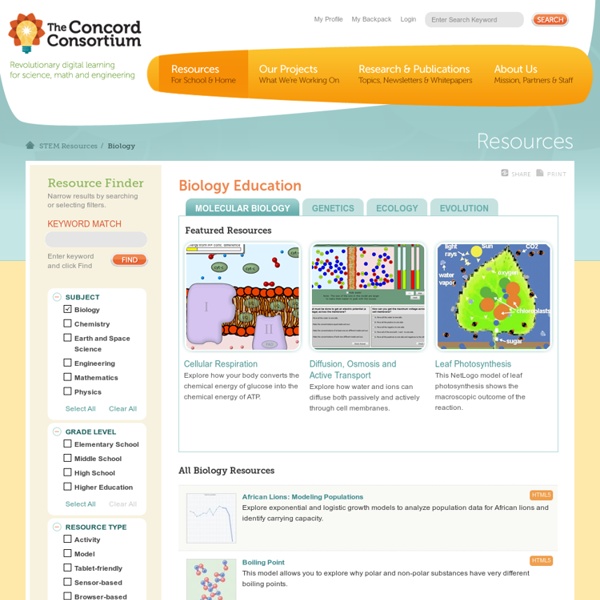



Explore, Play, Discover: Websites, Activities & More Search form Search Low-cost, teacher-tested activities for the classroom and the curious. Science of Cooking • Explore the science behind food and cooking with recipes, activities, and Webcasts.PreviousNext Explore, Play, Discover: Websites, Activities, and More Auroras: Paintings in the Sky Far north in the night sky, a faint glow appears on the horizon. Feeling Pressured Feel atmospheric pressure changes by stepping into a garbage bag. Camera Obscura Take the Beat Back Uncover the everyday origins of some extraordinary instruments. The Cold Water Candy Test Science of Baseball What's the science behind a home run? Arctic Seals These unique – and uniquely beautiful – seal species spend their lives amid the sea ice Plant Hybrids If you're a patient gardener, you can grow your own hybrid flowers. 2016 Total Solar Eclipse Telescope View Watch the telescope view of the entire 2016 total solar eclipse in Micronesia. Energy from Death Slinky in Hand Make waves without getting wet. Cheshire Cat Pages explore Connect
5 Great Web Tools to Enhance Collaboration in Class April 22, 2015 If anything, web technologies have redesigned the notion of collaboration and rendered it an open construct independent of any conceivable spatio-temporal constraints. For instance, in our educational context, possibilities for collaborative learning are bigger than ever before. Teachers and students have at their hands a variety of powerful softwares and web-based tools to help them engage in collaborative learning anytime, anywhere. When we talk about collaborative tools we are basically referring to web tools that allow teachers and students to do the following: communicate either synchronously or asynchronously, collaborate in creative ways, engage in interactive discussions, easily share and access learning resources (i.e documents, PDFs, files, calendars) and many more.To this end, we have curated this list to share with you what we think are some of the best web-based tools to enhance teachers-students collaboration and ultimately, boost students learning.
Bones: They’re alive! Without bones, your body would be a slippery bag of organs. But the stiff models of a skeleton that you’ve seen in science class (or as Halloween decorations) tell only half the story. That’s because “the skeleton does more than just hold you up,” explains Laura Tosi Bones are made of living, breathing cells. And they play all sorts of important roles, says Tosi, who directs the Bone Health Program at Children’s National Medical Center in Washington, D.C. Tiny ear bones conduct sounds that help us hear. And that’s just for starters. Cells called osteoblasts (gray blobs forming an oval) create new bone tissue. Robert M. The skeleton crew The framework that gives your body shape is surprisingly busy. The body’s skeleton changes constantly. Cells called osteoclasts break down old bone through a process called resorption. Through childhood and early adulthood, the body makes more new bone than it takes away. Wikimedia Commons To build more bone, cells require certain building blocks.
TeacherTube Encyclopedia of Earth Compress PDF – Reduce your PDF Online for Free Plickers